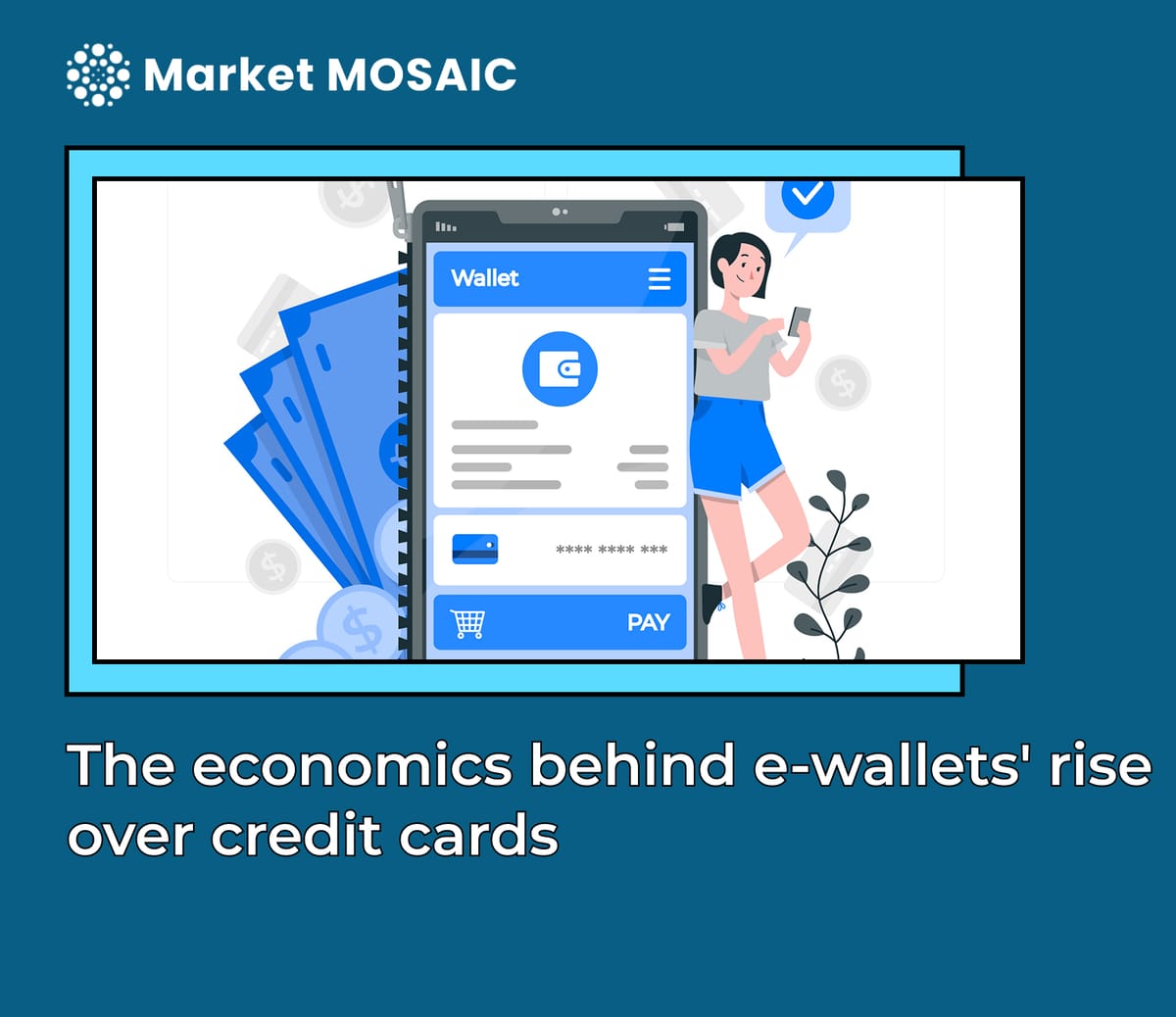The economics behind e-wallets' rise over credit cards

Just a few years ago, paying with a smartphone still felt novel. Today, it's the norm in many parts of the world. But what lies beneath the convenience of tapping to pay is a deeper, more transformative shift, one that’s quietly redrawing the economics of global commerce. At the heart of this transformation are e-wallet platforms like Alipay and WeChat Pay, which are not only outpacing traditional credit cards in adoption but doing so with a radically different cost model.
In China, the change is already visible on a national scale. As of 2023, mobile wallets account for 84% of all transactions, according to GlobalData. It’s more than a trend, it marks a major rewire of how financial value moves in modern markets. Where traditional credit card networks often charge transaction fees between 2% and 3%, platforms like Alipay and WeChat Pay offer rates as low as 0.55% and 0.60%. For retailers, especially in high-volume environments, those fee cuts can be the difference between breaking even and breaking out.
Why fee gaps matter more than you think
This gap in fees has ignited a new kind of economic engine. Lower costs at the point of sale free up capital. For some businesses, this means they can pass savings on to customers in the form of competitive pricing. For others, it allows for reinvestment in the customer experience, faster checkouts, personalized offers, or better loyalty programs. The outcome is clear: e-wallet adoption grows, consumers become more loyal, and businesses deepen their digital roots.
What elevates this beyond a local trend is its global significance. The mobile wallet model pioneered in Asia is setting a new benchmark for how payments can, and arguably should work in a digital-first economy. CEOs and founders in Western markets would be wise to watch closely. In many ways, this isn't just about payment methods, but in the rising expectations of today’s digital-first consumers.
Wallets as ecosystems, not just tools
The rise in e-wallet adoption is driven by more than just convenience, it’s the economics and the ecosystem. Unlike traditional credit cards, e-wallets are not just payment processors; they are dynamic platforms that bundle loyalty programs, personal finance tools, micro-investments, and peer-to-peer transfers into a single, seamless interface. When a consumer uses WeChat Pay or Alipay, they’re not just making a transaction, they’re engaging with an interconnected ecosystem designed to anticipate needs, deliver value, and deepen loyalty. This shift is fundamentally redefining what it means to be a merchant in the digital age.
Strategic takeaways for CEOs and Founders
If you’re a founder, executive, or investor still thinking of payment infrastructure as a backend function, this is your wake-up call. Payments have become a strategic touchpoint. Leaders need to think of payment platforms as strategic growth levers. Second, the data e-wallets generate real-time, high-resolution behavioral signals and hence offer a goldmine for personalization and forecasting. Third, failing to support the dominant platforms in a target market could mean missing out on entire customer segments. Companies that ignore this shift risk more than inefficiency, they risk invisibility
For retail and tech-driven brands eyeing expansion in Asia or other mobile-wallet-dominant markets, seamless e-wallet integration isn’t optional, it’s the baseline for doing business. Even in markets where credit cards still dominate, change is on the horizon. Younger generations, raised on contactless convenience, will demand payment methods that reflect the rest of their digital-first lives.
In the end, the story of e-wallets is not just about technology or finance, it’s about efficiency, loyalty, and competitive edge. Businesses that adapt will gain ground. The question is no longer if this transformation will reshape your business, but how quickly you’re prepared to ride the wave.





